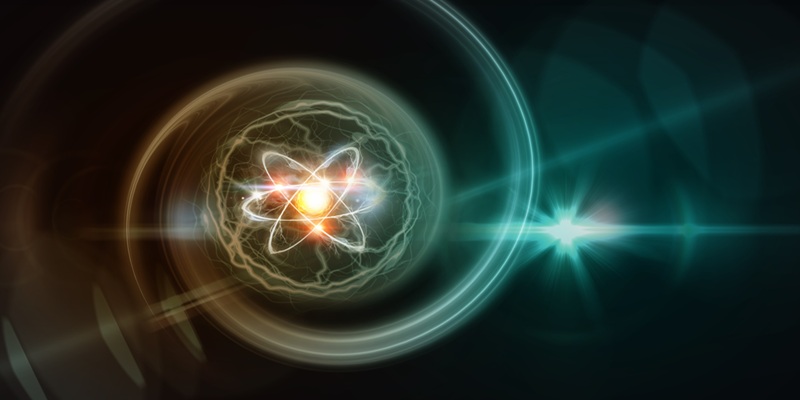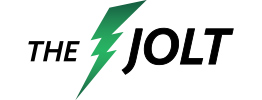Chris Reilly’s Note: Do you own any nuclear stocks? If you’re like most investors, probably not. But you might want think about changing that. Because a nuclear resurgence is underway… and Chris Wood and Stephen McBride have unearthed the perfect way to play it.
In this special issue, you’ll get a peek inside their latest premium Disruption Investor issue, where they recommend the first ever nuclear stock to qualify for the Disruptor 20 portfolio…
***
Atomic technology used to make the most destructive weapons in human history. But modern uses of nuclear power are overwhelmingly good.
It’s hard to think of a tougher assignment for a PR pro than painting nuclear power in a positive light.
If you’ve ever watched The Simpsons, you’ll know the evil Mr. Burns owned the nuclear power plant. There, Homer Simpson nods off in the control room and toxic sludge pours into the local river.
Just like The Simpsons, that scenario is fiction. Nuclear isn’t dirty or dangerous.
For starters, nuclear power (red) keeps the lights on for about one in five American homes today:
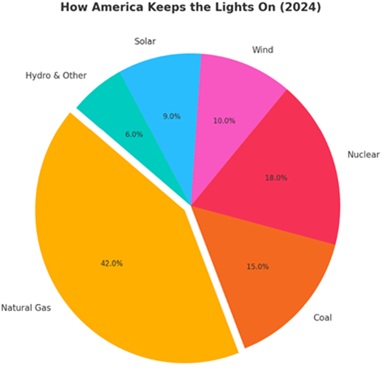
Source: Created by ChatGPT
I think we should power 100% of America’s energy needs with nuclear. It’s the only energy source that scores a perfect four: clean, safe, dense, and reliable.
Let’s walk through each point below.
Safe: For every unit of energy produced, brown coal kills over 1,000X more people than nuclear. It’s just as safe as solar. In fact, you receive more radiation from eating a single banana than you do from living next to a nuclear power plant for a year.
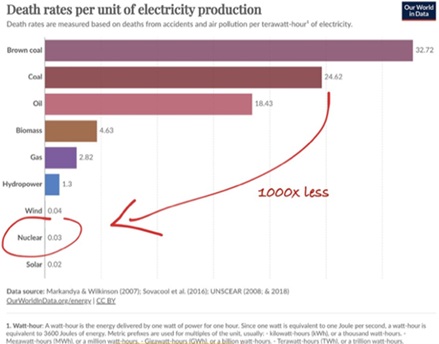
Source: Our World in Data
Clean: When accounting for the entire lifecycle, from mining to waste disposal, nuclear power emits less CO2 than any other source. And its waste is miniscule. All the US’s nuclear waste produced over the past 60+ years could fit on a single football field, stacked less than 10 yards deep.
Solar panels, by contrast, produce 300X more waste by volume for the same amount of energy.
Reliable: While solar and wind depend on the whims of the weather, nuclear plants run 24/7, rain or shine, with no fuel price volatility, and with a capacity factor of 92%. That means reactors are producing max power more than 90% of the time during the year.
That’s 2X more reliable than coal units and 3X more reliable than solar plants:
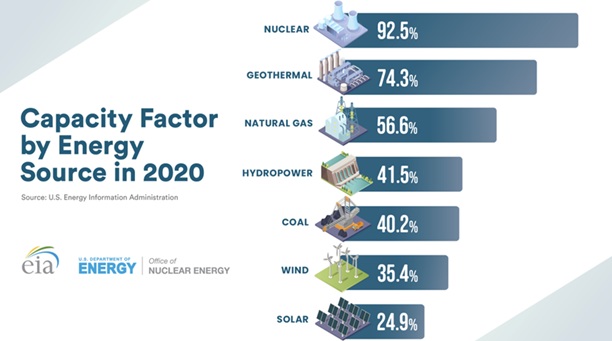
Source: Seeking Alpha
Dense: A nuclear plant requires a tiny fraction of the land needed for solar or wind farms to produce the same round-the-clock power. A uranium pellet the size of your fingertip holds the same energy as a ton of coal.
It’s like stuffing an oil barrel into a sugar cube. If you love pristine, green hills, you should champion nuclear energy. Criticizing nuclear on environmental grounds is backward.
Unfortunately, due to media fearmongering, we turned our back on the best energy source known to man.
We’ve closed more nuclear plants than we’ve opened this century… and America’s nuclear energy output has been flat for 25 years.
|
This is one of the worst unforced errors America has ever made. Cheap, reliable energy is the bedrock of innovation and prosperity.
But now, thankfully, we’re righting that wrong. And it’s all because of another trend we were early to in Disruption Investor… artificial intelligence (AI).
ChatGPT sparked an energy revolution
When you use ChatGPT, you’re tapping into vast data centers filled with specialized chips that run so hot, they need constant cooling just to keep from melting down.
One of Nvidia’s (NVDA) new AI chips draws as much power as two households.
A modern AI data center needs 5X more power than a traditional one. Even a simple ChatGPT query uses at least 10X more electricity than a Google search.
ChatGPT launched almost three years ago. It’s become the fastest-growing product in history, with roughly 800 million weekly users:
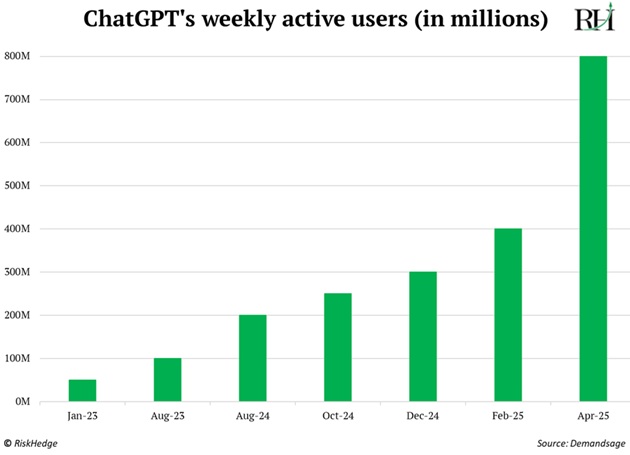
Now, everyone is asking, “How are we going to power all these AI factories?”
We’re entering a new era of energy demand: AI, robotics, reindustrialization, and electrification all need more power. And not just clean power, but “always on” power. Energy you can bet a $10 billion data center on.
That, my friends, is forcing everyone to do a U-turn on atomic energy.
Now, big tech companies are sprinting around, checkbooks in hand, hoovering up all the atomic energy then can get their hands on.
For example, in the past year:
- Microsoft (MSFT) inked a deal to help restart a reactor at the iconic Three Mile Island plant in Pennsylvania.
- Google (GOOGL) signed an agreement with startup Kairos Power to build several small modular reactors (SMRs) to power its data centers.
- Amazon (AMZN) entered a 17-year contract with Talen Energy Corp. (TLN) to power its data centers with nuclear energy. It’s also among a consortium investing $500 million into SMR startup X-energy.
- Meta Platforms (META) inked a 20-year deal to buy power from Constellation Energy Corp.’s (CEG) Clinton nuclear plant in Illinois. The deal ensures the Illinois plant will stay operational past its previously scheduled 2027 closing.
A few years ago, I wrote we’d soon see nuclear-powered AI factories. It sounded a little kooky at the time. Now, it’s happening!
We’re entering the second atomic age. So, how do we profit from it?
We make money the Disruption Investor way…
Paid-up members can finish reading the full issue here. If you’re not a Disruption Investor member and would like to access Stephen and Chris’s top nuclear pick, you can join us here.
Inside this issue, you’ll learn about the critical technology 95% of the world’s nuclear power plants rely on… the company that supplies it… and why it’s trading at such an attractive price today.
Stephen McBride
Chief Analyst, RiskHedge

